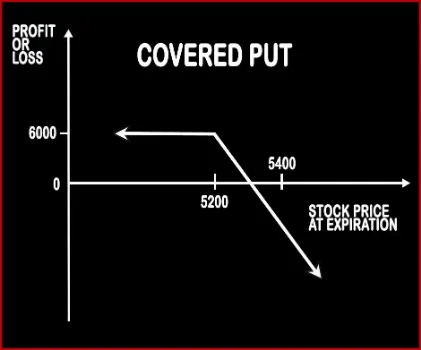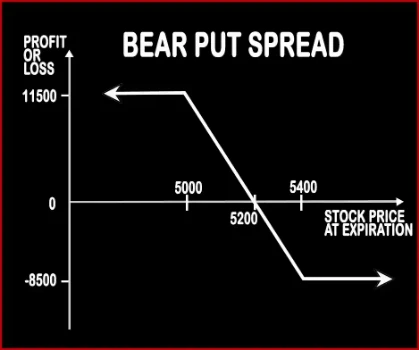Compare Strategies
| COVERED PUT | BEAR PUT SPREAD | |
|---|---|---|

|

|
|
| About Strategy |
Covered Put Option StrategyThis strategy is exactly opposite to Covered Call Strategy. Here the investor is neutral or moderately bearish in nature and wants to take advantage of the price fall in the near future. The trader will short one lot of stock future. Now the trader will short ATM Put Option, the option strike price will be his exit price. If the prices rally above the strike price, the |
Bear Put Spread Option StrategyWhen a trader is moderately bearish on the market he can implement this strategy. Bear-Put-Spread involves buying of ITM Put Option and selling of an OTM Put Option. If prices fall, the ITM Put option starts making profits and the OTM Put option also adds to profit at a certain extent if the expiry price stays above the OTM strike. However, if it falls below the OTM .. |
COVERED PUT Vs BEAR PUT SPREAD - Details
| COVERED PUT | BEAR PUT SPREAD | |
|---|---|---|
| Market View | Bearish | Bearish |
| Type (CE/PE) | PE (Put Option) + Underlying | PE (Put Option) |
| Number Of Positions | 2 | 2 |
| Strategy Level | Advance | Advance |
| Reward Profile | Limited | Limited |
| Risk Profile | Unlimited | Limited |
| Breakeven Point | Futures Price + Premium Received | Strike Price of Long Put - Net Premium |
COVERED PUT Vs BEAR PUT SPREAD - When & How to use ?
| COVERED PUT | BEAR PUT SPREAD | |
|---|---|---|
| Market View | Bearish | Bearish |
| When to use? | The Covered Put works well when the market is moderately Bearish. | The bear call spread options strategy is used when you are bearish in market view. The strategy minimizes your risk in the event of prime movements going against your expectations. |
| Action | Sell Underlying Sell OTM Put Option | Buy ITM Put Option, Sell OTM Put Option |
| Breakeven Point | Futures Price + Premium Received | Strike Price of Long Put - Net Premium |
COVERED PUT Vs BEAR PUT SPREAD - Risk & Reward
| COVERED PUT | BEAR PUT SPREAD | |
|---|---|---|
| Maximum Profit Scenario | The profit happens when the price of the underlying moves above strike price of Short Put. | Max Profit = Strike Price of Long Put - Strike Price of Short Put - Net Premium Paid. |
| Maximum Loss Scenario | Price of Underlying - Sale Price of Underlying - Premium Received | Max Loss = Net Premium Paid. |
| Risk | Unlimited | Limited |
| Reward | Limited | Limited |
COVERED PUT Vs BEAR PUT SPREAD - Strategy Pros & Cons
| COVERED PUT | BEAR PUT SPREAD | |
|---|---|---|
| Similar Strategies | Bear Put Spread, Bear Call Spread | Bear Call Spread, Bull Call Spread |
| Disadvantage | • Limited profit, unlimited risk. • Trader should have enough experience before using this strategy. | • Limited profit. • Early assignment risk. |
| Advantages | • Investors can book profit when underlying stock price drop, move sideways or rises by a small amount. • Able to generate monthly income. • Able to generate profit from fall in prices or mild increase in the prices. | • If the strike price, expiration date or underlying stocks are rightly chosen then risk of losses would be limited to the net premium paid. • This strategy works well in declining markets. • Limited risk. |